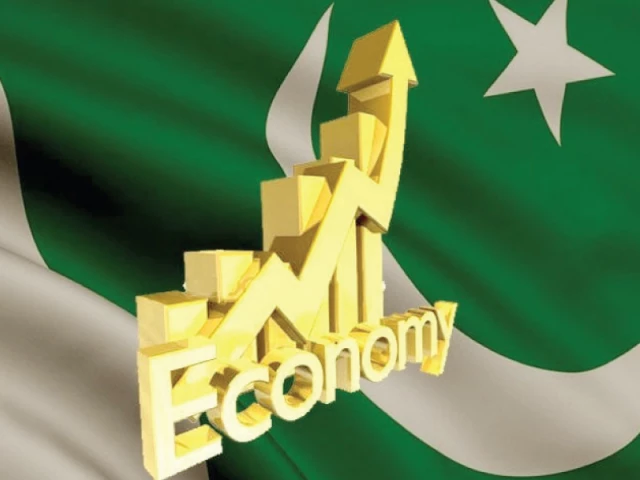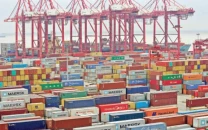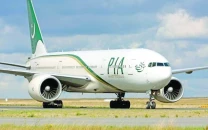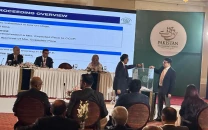Trade, economic partnership agreements fuel growth
Regional land route holds key to diversifying Pakistan's trade, unlocking Central Asian markets

Pakistan, by developing its own internal integration through free trade agreements and economic partnership agreements with Central Asian Republics (CARs) including Kazakhstan, Uzbekistan, Tajikistan, Kyrgyzstan, Turkmenistan and most importantly with China, can provide refuge at times when other markets suffer.
The free flow of products and people across country borders increases overall economic efficiency, widens consumer choices, decreases production costs and enables faster economic growth. It contributes to improved living standards and increased investment opportunities.
As total trade flow increases, liquidity increases. With an increase in liquidity comes a decrease in volatility, which is eventually followed by broader, deeper markets with an improving risk profile.
So, while optimal policy prescriptions within all four grand kingdoms of macroeconomics (fiscal policy, monetary policy, income policy and trade policy) are desirable, effective trade policy can be especially important for fueling economic growth and equity market outperformance.
Free trade among Central Asian countries and Pakistan will make the region more competitive and more productive. By reducing arbitrary government constraints on trade flows, businesses enjoy increased market access and can exploit economies of scale and other local advantages, allowing them to purchase resources from the cheapest suppliers and locate manufacturing operations where they are most efficient.
Expansion of free trade in Southeast Asia among member countries of the Association of Southeast Asian Nations (Asean) is an example to follow. Total trade (exports and imports) in the Asean bloc has surged since 2002-03, when the Asean Free Trade Area drastically reduced tariffs within the region.
Today, total trade stands at more than $750 billion and foreign direct investment (FDI) above $200 billion. Furthermore, trade within the Asean bloc represents 60% of their total trade and their annual growth rates for the last two decades have averaged between 8% and 10%.
The Asean region has shown that they understand trade dynamics and a major stimulus to growth. Besides the Asean-China free trade agreement, they also have free trade deals with India, South Korea, Japan, Australia and New Zealand.
Included in the Asean-China free trade deal is an agreement on FDI. The agreement stipulates that there will be similar transparency and legal protection for Chinese companies in the Asean region as those granted to member countries of the bloc. This simply makes it easier for capital to flow from China to the Asean region.
The net inflow of FDI into Asean countries from China has been substantially positive since the start of tariff reductions in 2005. It is thus much easier for companies to seek competitive advantages within the region, leading to increased investment and ultimately higher growth.
It is high time that Pakistan and Central Asian countries with China create a similar regional free trade agreement that involves reduction or elimination of tariffs and decreased regulations on investments and services. There are investment opportunities across the board as trade acceleration increases the pace of economic growth.
Currently, Pakistan's trade with CARs is between $400-500 million annually and is mostly via Afghanistan. This should not be the case. Pakistan shares deep cultural and historical ties with Central Asian states since centuries and therefore it is imperative to enhance mutual interest in regional trade connectivity.
Additionally, Pakistan's geographical location would offer CARs the potential to integrate their transit trade routes via Sost-Khunjerab in Gilgit-Baltistan all the way down to Gwadar and Karachi ports on the Arabian Sea.
Kashgar, located in southwestern Xinjiang, China is well positioned to become a major regional logistic hub for Transports Internationaux Routiers (TIR) and can be used for access to and from all neighbouring Central Asian countries and integrate with the China-Pakistan Economic Corridor (CPEC).
The regional land route connectivity under TIR holds the key to diversifying Pakistan's total trade and unlocking markets in Central Asia. This quicker mode of transportation for regional connectivity can be undertaken by National Logistics Corporation (NLC) and others under TIR and Multimodal conventions.
The road route can also be connected for transshipment by rail towards Pakistani ports, which are currently underutilised, then by sea towards their final destinations and vice versa. As trade volumes continue to rise, more and more transit/TIR hubs will emerge within CARs and Pakistan, at last fulfilling the crucial component of CPEC.
The writer is a philanthropist and an economist based in Belgium



















COMMENTS
Comments are moderated and generally will be posted if they are on-topic and not abusive.
For more information, please see our Comments FAQ